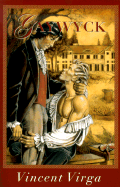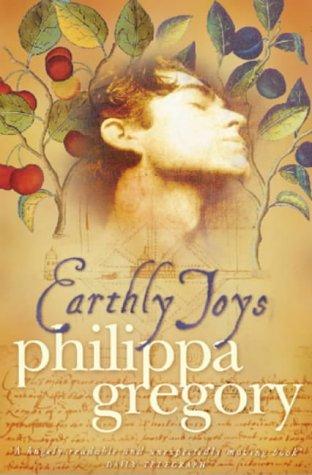The Historical Novel Society defines Historical Fiction as: “a novel must have been written at least fifty years after the events described, or have been written by someone who was not alive at the time of those events (who therefore approaches them only by research).”
That would mean neither Maurice (E.M Foster) nor The Charioteer (Mary Renault) could be included within this definition, and many more besides, which would be a great shame. My personal (and probably erroneous) view of gay historical fiction is any book which deals with gay themes in the past, whether they were contemporarily written in that time or not.
With the changes in the acceptance of homosexuality on the world stage, (looking specifically at Stonewall and the Wolfenden Report,) it seems difficult to say that gay historical fiction can only qualify if it starts in the 1950’s. In my opinion at least, events of the 50’s and 60’s are just as interesting and relevant from a historical perspective as was gay society in 1900 or 1800.

When it comes to textbooks on the subject of gay history there are literally hundreds of tomes, some much drier than others. Possibly unsurprising, there is only one major work, that even explores the genre of gay historical fiction. (Gay and Lesbian Historical Fiction by Norman W Jones). However, it is almost unreadable, and doesn't make the genre accessible or appealing, as far as I'm concerned! Better far to read the wonderful web resource of Rictor Norton!
I find it odd that so few people have explored the many stories of gay men in the past, whether in fictionalized biography for famously gay men such as Byron or Michelangelo, or for purely fictional inventions, when there is such a huge catalogue of heterosexual historical romance.
Historical Merit and RationalisationBut some have explored those stories, and more are now doing so than ever before. There’s some argument as to what the first actual gay historical novel was, going by the Historical Novel Society’s rules, and I would have to say that it was probably Mary Renault with her classical tales of Ancient Greece. Of Alexander the Great. (Fire from Heaven, The Persian Boy, Funeral Games) Her wonderful The Charioteer was written in the 1950’s but only dealt with an era a few years back, the early part of the 2nd World War and as I said - it wouldn’t qualify under the HNS rules. There were others which shone brightly when they first appeared (but were published and considered as pulp by some, rather than as classics) such as Richard Amory’s strange and possibly substance-fuelled American Frontier stories (Listen, the Loon Sings; Willow Song and others.)
Renault was a solid and respected historian. Her work was read very widely outside the gay community. It was easy, perhaps (especially as any sexual content had to be almost completely coded and hidden away) for people to read these books and pat themselves on the back for reading such perfectly rendered and exquisitely researched books by a professor of the classics. It was educational. It was easy, perhaps, to ignore the obvious love affairs of Alexander. And anyway – it’s Classical! They all did that sort of thing, didn’t they?
The Birth of Gay Gothic
 Gaywyck by Vincent Virga (1980) probably takes the accolade of the first modern gay historical romance. With its obvious nod to the traditional Gothic novel, in Gaywyck we find mad relations, hidden rooms, an innocent driven to the point of madness and danger lurking behind every door. Purple it certainly is (and its less popular sequel Vadriel Vail is even more so) but it broke the ice. Here was a story of gay men in the style of the Romance Novel that had been bought and devoured by millions of women worldwide. It should have opened the floodgates, but possibly even in 1980 it was a little ahead of its time.
Gaywyck by Vincent Virga (1980) probably takes the accolade of the first modern gay historical romance. With its obvious nod to the traditional Gothic novel, in Gaywyck we find mad relations, hidden rooms, an innocent driven to the point of madness and danger lurking behind every door. Purple it certainly is (and its less popular sequel Vadriel Vail is even more so) but it broke the ice. Here was a story of gay men in the style of the Romance Novel that had been bought and devoured by millions of women worldwide. It should have opened the floodgates, but possibly even in 1980 it was a little ahead of its time.
The genre didn’t die completely, but it disguised itself yet again, this time as literature and romance. Respected authors wrote books in the genre - such as Beryl Bainbridge (Master Georgie), Tom Spanbauer (The Man Who fell in love with the Moon) and mainstream popular authors such as Philippa Gregory (famous for her traditional historicals such as The Other Boleyn Girl) wrote Earthly Joys about the decadent Duke of Buckingham. Historical readers and Romance readers bought them, literature lovers bought them, and so did people  looking for gay fiction.
looking for gay fiction.
But still the floodgates didn’t break. More titles began to emerge, and more notably they were adventures and romances. Regency gentlemen, English sailors and pirates. However, for the main part all of these books were (and still are) published by small presses such as Linden Bay Romance, Torquere Books or Cleis Press.
When Brokeback Mountain arrived I, for one, thought that things would change and the publishers (who were still declaring that lesbian historicals were hot (Sarah Waters) but there wasn’t any market for gay historicals) would see the light.
But it still hasn’t really happened.
However, the future looks bright. There are more and more people writing it, and more and more people reading it.
Who are these people?
Surprisingly, just about anyone. Straight men, gay men, straight women, lesbians, transsexuals. Anyone with a passion for history and the need to tell (or to read) a good story. I believe that the majority of people reading gay romance are women right now, but there are (evidenced by my post bag) gay men in growing numbers who are not afraid to admit that they really enjoy what is generally termed now as a breeches, codpiece or a waistcoat ripper.
(or to read) a good story. I believe that the majority of people reading gay romance are women right now, but there are (evidenced by my post bag) gay men in growing numbers who are not afraid to admit that they really enjoy what is generally termed now as a breeches, codpiece or a waistcoat ripper.
With the advent and popularity of e-books, (which turn what might be an embarrassing (for some) purchase in a bookstore into an anonymous and instant gratification,) the gay historical novel seems to be pulling itself away from its Gothic and classical beginnings and is exploring other eras. From Saxon or Arthurian warriors (Mel Keegan) to the dangerous 19th Century, the Age of Sail with its infamous Article 29 (Lee Rowan, Alex Beecroft) through the Regency and into the Victorian era. Writers are researching and producing stories.
I was so thrilled when I found that Harlequin--under the Carina imprint--was dipping its toe into the water and was including gay romances, both contemporary and historical, in their new venture. Hurrah!
What fascinates, some say, is the difference between a male/female relationship and the male/male. The fact that gay love has always existed as long as love has – and how men dealt with that in each era, and each country. The fact that men look good in period dress (and out of it) and that carriages and pistols and swords are sexy. The fact that they don’t have to have a submissive female-ish character at all, but both can be dominant and masculine. The challenge of creating a “Happy Ever After” or at least a happy for now.
The Future
More. I am convinced that we are about to see an explosion of gay historical fiction over the next few years. New e-books are appearing almost daily, most epublishers that accept GLBTQ accept the genre as a matter of course. Recently, STARbooks, one of the larger gay print publishers, has put a specialist call out specifically for gay historical novels and anthologies and Running Press are actively seeking gay historical fiction prior to 1900.
It can only get better. It will make me busy as I attempt to keep track of it all, but it will make me happy.
My first book with Carina "Muffled Drum" will be coming out with Carina in the Spring of 2011 - so I can't share the cover with you yet, but I hope you'll try it. It is set in the Austro Prussian war of 1860 and has lots of men in gorgeous uniforms in it... *tempts*
so I can't share the cover with you yet, but I hope you'll try it. It is set in the Austro Prussian war of 1860 and has lots of men in gorgeous uniforms in it... *tempts*
Erastes
www.erastes.com
Erastes is the penname of a female author of gay historical fiction who lives in the UK. Her first novel Standish was published in 2006 (Gay Regency), and her second novel, Transgressions was one of the flagship titles for Running Press's gay historical romance line in 2009. Her third novel "Mere Mortals" will be published by Lethe Press in 2011. As well as "Muffled Drum" she has had five other novellas in print, details can be found of all the above on her website.
She's the proud owner of Speak Its Name, the only blog dedicated purely to reviews of gay historical fiction.

6 comments:
Very thought-provoking post. It taught me a lot about this interesting genre.
Thanks Wendy!
Very informative.
Thanks Taryn!
Great post Erastes. I love a good historical. You've given me a few new authors to look into and I've now got you're next title on my to buy list. :o)
Thanks Heather!
If you like what you read, let me know and I'll point you some other great authors. I hope to explore the genre a lot more on the blog - it's wonderful to come to an audience who may not have read any!
Post a Comment